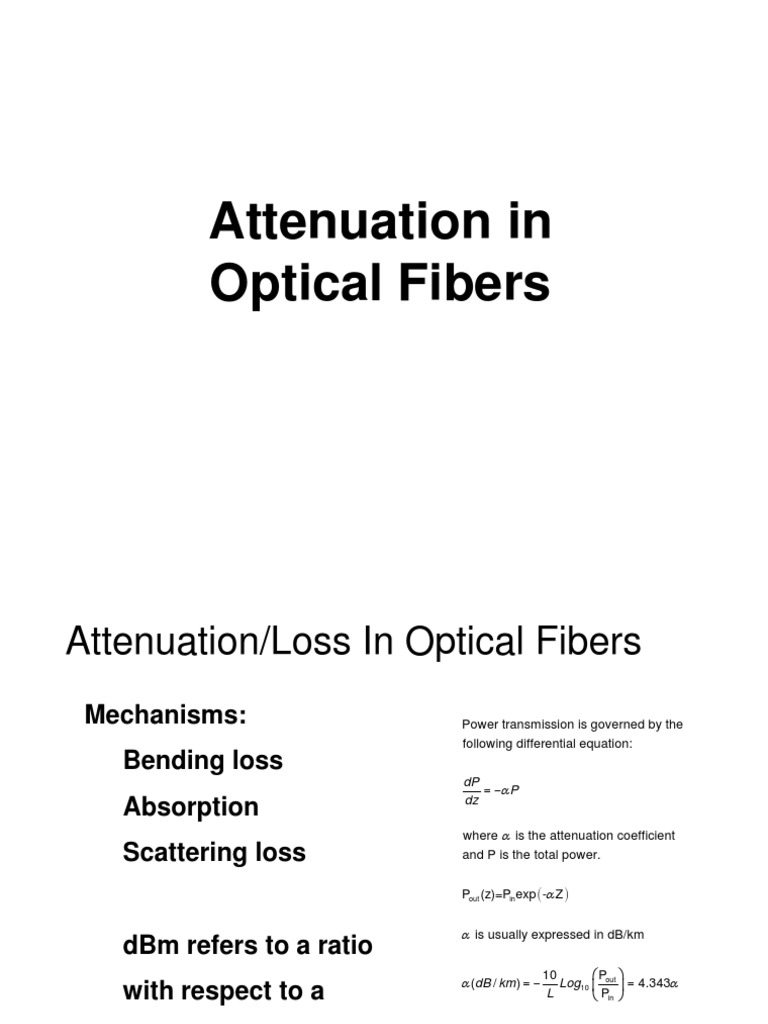As the world becomes increasingly interconnected, fiber optic technology stands at the forefront of communications innovation. The capabilities of fiber optic cables extend well beyond conventional transmission methods, offering unprecedented data transfer rates and bandwidth. However, one fundamental limitation that has been a persistent challenge in the deployment of this remarkable technology is attenuation. Understanding the causes of attenuation in fiber optic cables is crucial for optimizing their performance and ensuring reliable data transmission over extensive distances.
Attenuation, in the context of fiber optics, refers to the reduction in the intensity of light as it travels through the optical medium. This loss of signal strength is a natural phenomenon, further influenced by various factors inherent in both the material properties and external influences. A comprehensive exploration of the causes of attenuation highlights how each component contributes to the overall efficiency of fiber optic networks.
One primary contributor to attenuation is absorption, a process whereby light is absorbed by the glass material of the fiber. This absorption can be attributed to inherent impurities within the glass, such as water molecules or metal ions, which create localized energy levels that can trap photons. As a result, light energy is transformed into heat, leading to a diminishment in signal strength. The degree of absorption is wavelength-dependent; therefore, selecting wavelengths that mitigate absorption effects can significantly enhance transmission efficiency.
Another critical factor is scattering. Scattering occurs due to microscopic irregularities within the fiber’s material structure, as well as fluctuations in the density of the glass. Two primary types of scattering are prevalent: Rayleigh scattering and Mie scattering. Rayleigh scattering, which dominates in optical fibers, arises from the variations in density at the molecular level, causing light to deviate from its original path. As the light interacts with these particles, a portion of its energy is dispersed in different directions, thereby causing attenuation. In contrast, Mie scattering involves larger, macroscopic structures or particles that contribute to further signal degradation. Collectively, these scattering mechanisms play a vital role in limiting the effective range of fiber optic communication systems.
In addition to absorption and scattering, bending losses represent a practical challenge in fiber optic installations. When fibers are bent beyond their specified radii, light may be unable to properly propagate, escaping from the core into the surrounding cladding or into the environment altogether. This phenomenon is exacerbated when tight bends or abrupt directional changes are made, leading to substantial losses. Engineers must meticulously consider installation practices and routing paths to minimize such bends, thus preserving signal integrity.
Microbending and macrobending are subcategories of bending losses that have garnered significant attention. Microbending refers to small-scale, localized bends usually caused by external forces, such as pressure from surrounding components or changes in temperature. Conversely, macrobending involves larger radius bends often incurred during installation. Both types exacerbate attenuation and may present challenges in terms of long-term reliability.
Another noteworthy factor that contributes to the decline in signal strength is splice loss, which occurs when two fiber segments are joined together. Improper alignment or the introduction of air gaps during splicing can result in significant energy loss, thus hindering the overall performance of the fiber optic link. Attention to detail during the splicing process is paramount, as meticulous techniques can minimize discrepancies in refractive indices between fiber ends, thereby optimizing light transmission.
Connector loss, similar to splice loss, represents another potential pitfall. The interface between the fiber and the connecting apparatus may introduce additional losses due to factors such as dust, misalignment, or insufficient end-face preparation. Quality assurance and testing procedures are essential to ensure that connectors maintain optimal performance levels across network infrastructures.
Temperature fluctuations also induce attenuation. The optical properties of glass can vary with temperature changes, affecting both the refractive index and the mechanical stability of the fiber. This interplay between thermal dynamics and optical performance necessitates careful material selection and system design to ensure that transmission characteristics remain stable across a range of operating conditions.
Moreover, environmental factors such as humidity and physical trauma can exacerbate attenuation. Excessive humidity may lead to moisture ingress, affecting the glass and potentially increasing absorption rates. Similarly, exposure to physical perturbations can induce microbending, thus compromising signal strength. Engineers must incorporate protective measures in fiber installations, such as robust encasements, to mitigate these external influences.
Lastly, while intrinsic losses play a crucial role, the nature of the transmission signal—specifically, the modulation techniques used—may also contribute to perceived attenuation. Different modulation formats can exhibit varying resistance to noise and distortions, impacting effective data throughput. Therefore, optimizing modulation strategies can lead to enhancements in a system’s ability to counteract the natural attenuation of optical fibers.
To conclude, a multifaceted understanding of the causes of attenuation in fiber optic cables reveals the complexity underlying this advanced communication technology. The interplay between absorption, scattering, bending losses, splice losses, and external influences ultimately shapes the efficiency and effectiveness of fiber optic systems. By addressing each of these parameters judiciously, researchers and engineers can continue to unlock the potential of fiber optics, propelling the next generation of high-speed connectivity while minimizing the challenges posed by attenuation.










